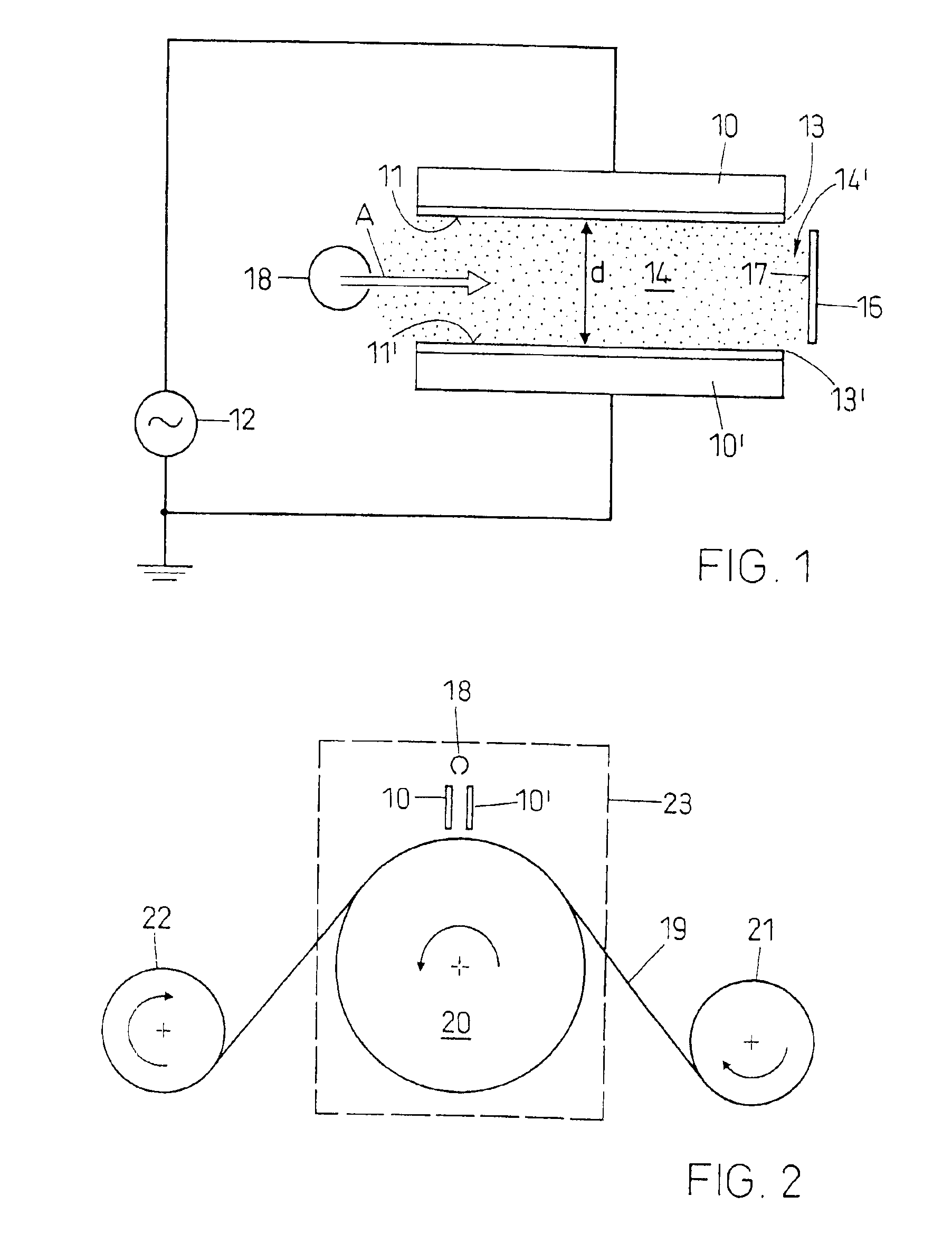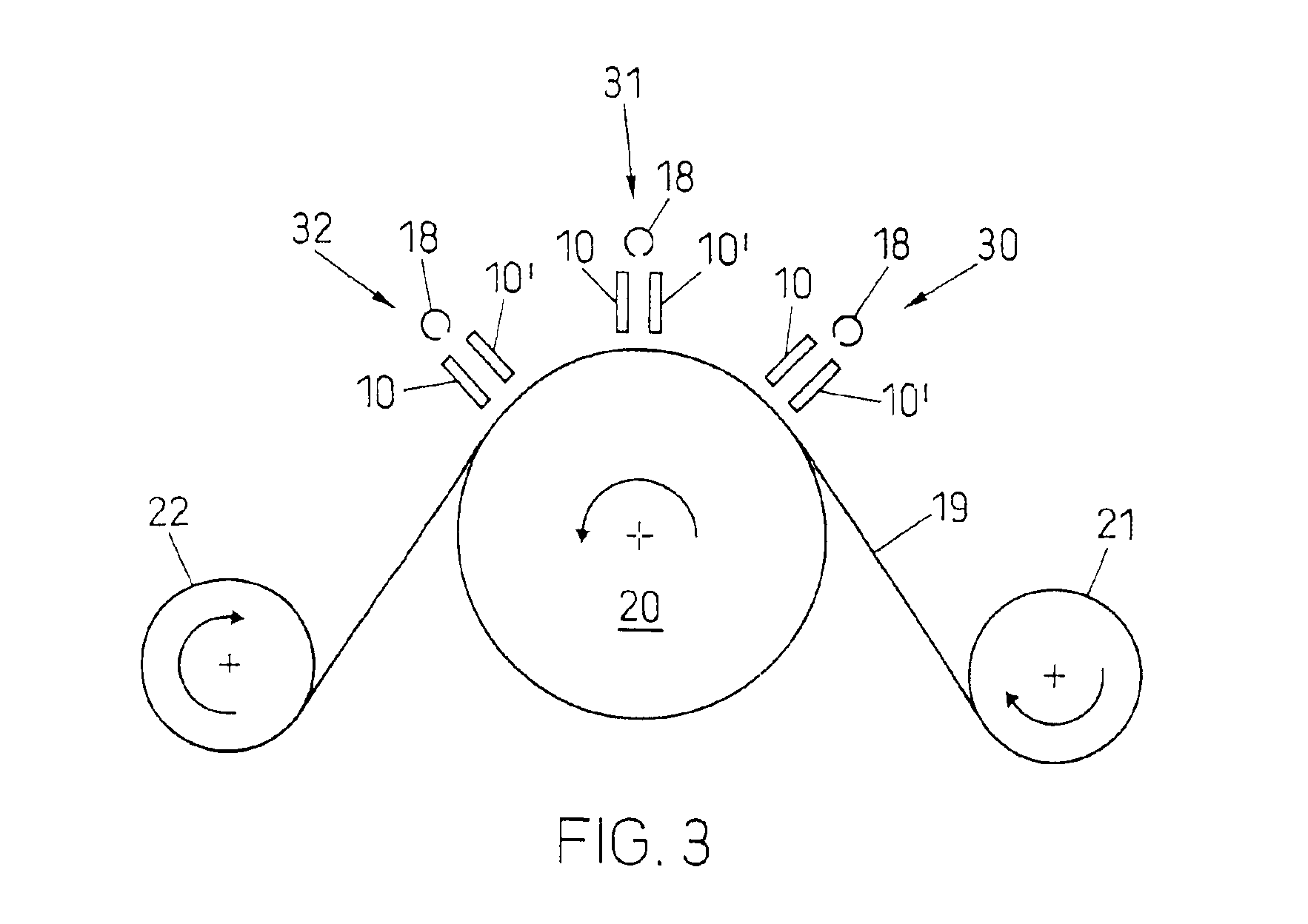Method and device for treating surfaces using a glow discharge plasma
a technology of glow discharge and surface treatment, which is applied in the direction of chemical vapor deposition coating, electrical equipment, coatings, etc., can solve the problems of unsuitable surface treatment, high cost, and high pressure used, and achieve the effect of simple method and device, reduced disadvantage of direct plasma exposur
- Summary
- Abstract
- Description
- Claims
- Application Information
AI Technical Summary
Benefits of technology
Problems solved by technology
Method used
Image
Examples
Embodiment Construction
[0028]FIG. 1 shows the principle of the inventive method. Between two plate electrodes 10 and 10′ with two electrode faces 11 and 11′ being arranged substantially parallel to each other at a distance d between each other a plasma is lighted and sustained by energizing the electrodes with per se known suitable energizing means 12 comprising, for example, a power supply, high voltage transformer, and matching network. The electrode faces 11 and 11′ have aligned edges, in particular one pair of such aligned edges 13 and 13′. The aligned edges 13, 13′of the two electrode faces 11, 11′ define a plasma space 14 between them. whereby the plasma sustained between the two electrode faces 11 and 11′ visibly protrudes over pairs of aligned edges 13 and 13′ of the electrode faces in edge regions 14′ (fringing field).
[0029]The device further comprises means 18 for feeding a treatment gas or treatment gas mixture to the plasma space 14, 14′ and means for positioning a substrate 16 with a surface ...
PUM
| Property | Measurement | Unit |
|---|---|---|
| pressure | aaaaa | aaaaa |
| pressure | aaaaa | aaaaa |
| distance | aaaaa | aaaaa |
Abstract
Description
Claims
Application Information
 Login to View More
Login to View More - R&D
- Intellectual Property
- Life Sciences
- Materials
- Tech Scout
- Unparalleled Data Quality
- Higher Quality Content
- 60% Fewer Hallucinations
Browse by: Latest US Patents, China's latest patents, Technical Efficacy Thesaurus, Application Domain, Technology Topic, Popular Technical Reports.
© 2025 PatSnap. All rights reserved.Legal|Privacy policy|Modern Slavery Act Transparency Statement|Sitemap|About US| Contact US: help@patsnap.com



